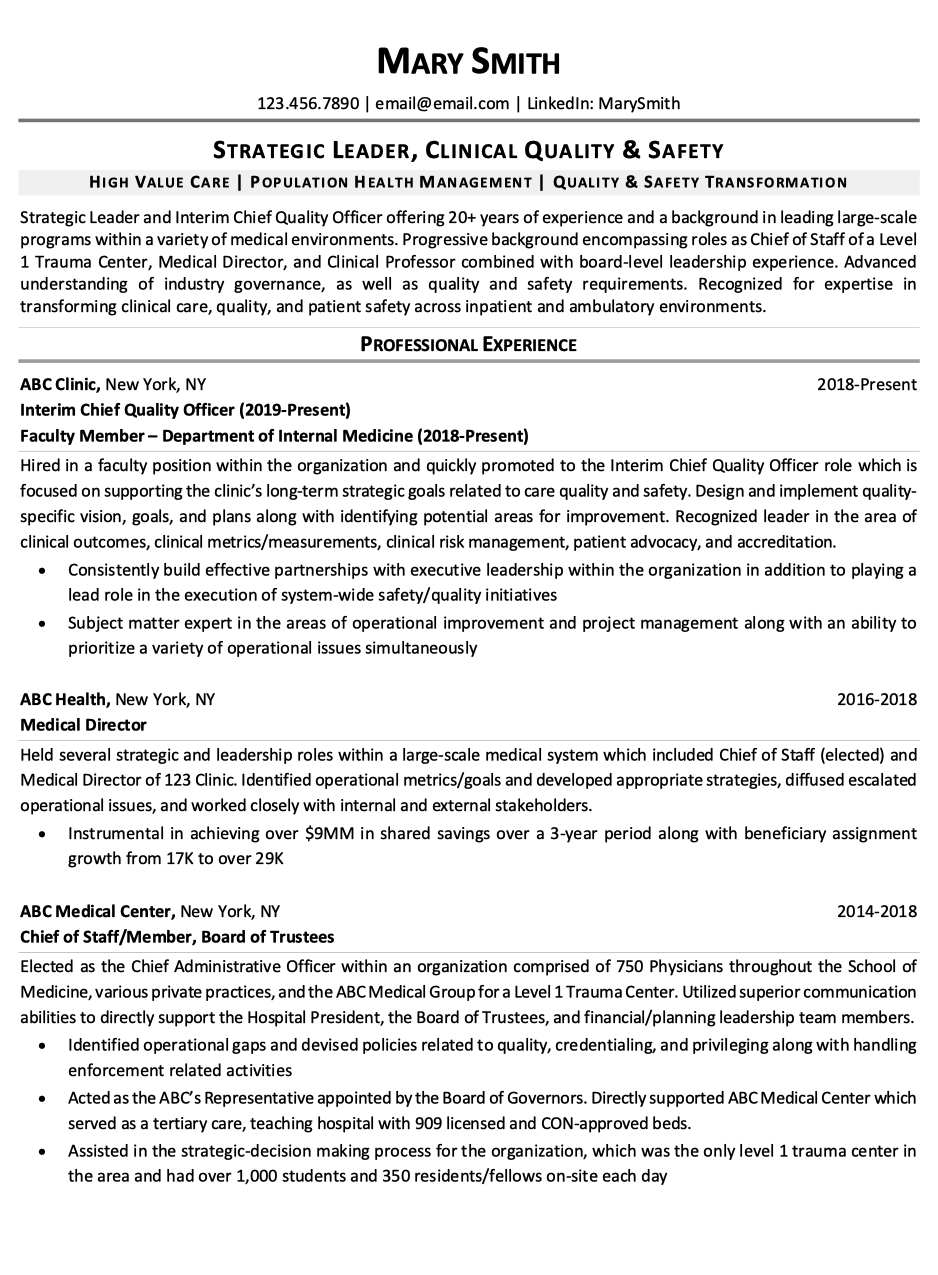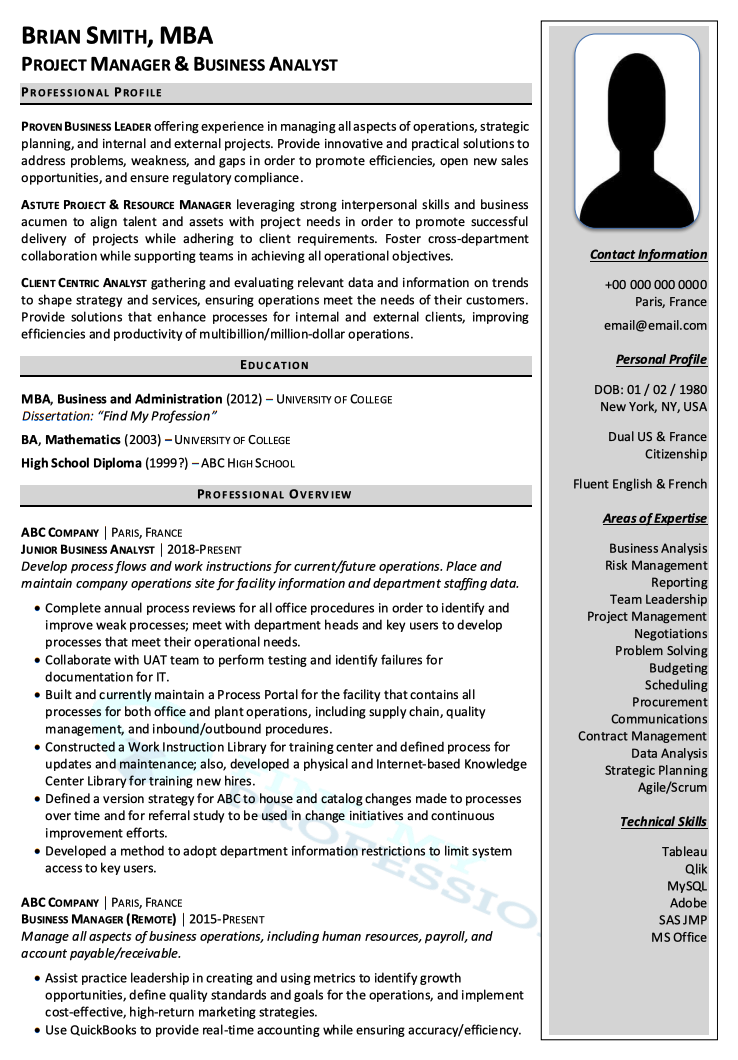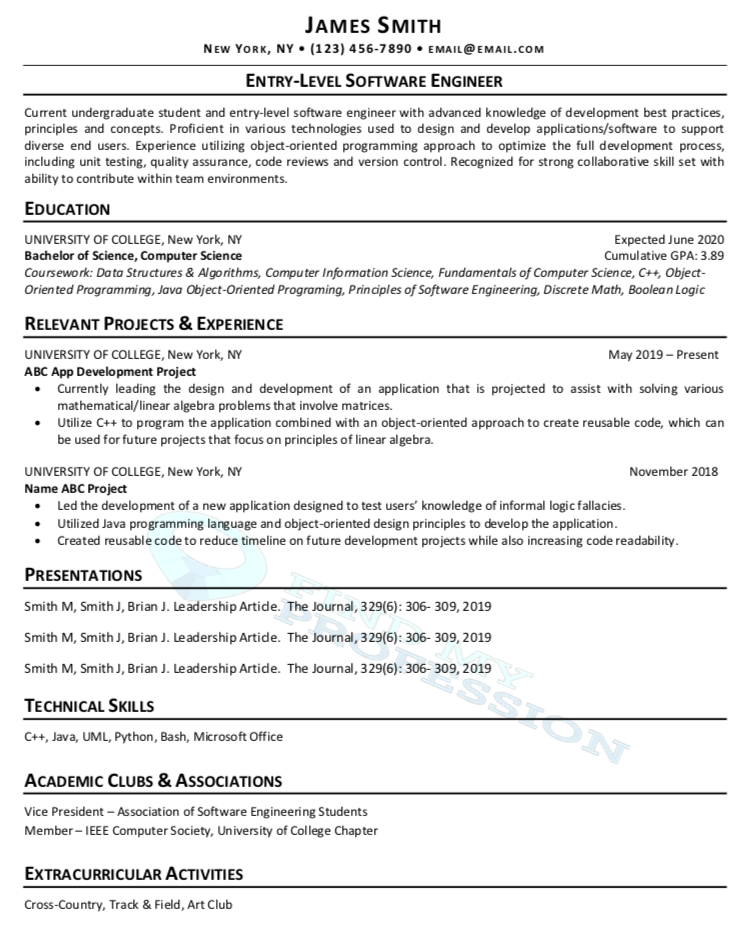So you need to write a CV?
This is an important part of your job search.
The job you are applying for will have an average of 250 rival applicants.
That’s a lot.
Consequently, this is not something for you to just spend a couple of minutes writing. Give your CV and job search the attention it deserves.
This article will give you advice on how you can make yourself stand out from the rest of the candidates. Read on for more details.
What Is a CV?
What does “CV” stand for? The initials “CV” stand for “curriculum vitae.” Some use the phrase “CV resume.”
The term is Latin, meaning “course for life.”
This is a document that provides a glance at your skills, employment history, and education.
Your achievements and personality have definitely got a place in your CV as well.
As a part of your application, a recruiter will read your CV and determine if you are a good fit for the open position.
The difference between a good CV and a bad CV is therefore absolutely pivotal in your application. Recruiters spend an average of only 6 seconds considering your initial application. You must be sure to stand out.
There are lots of tips that help accomplish this. But first, let us differentiate between CVs and resumes.
What Is the Difference Between a CV and Resume?
CV vs. Resume. They aren’t all that different. Much like with a resume in the US, the curriculum vitae serves a similar purpose: to help you land that interview.
One significant difference is geography. Depending on what country you are in or where you are applying, you may be asked for a resume or CV.
US and Canadian employers are more likely to request a resume.
In the US, CVs are used for academic or research roles.
European employers (including those in the UK), as well as New Zealand based employers, are more likely to request a CV.
Most countries in Asia, as well as countries like Australia, India and South Africa, use CVs and resumes interchangeably. Generally, you will see resumes requested in the public sector and CVs in the private sector.
A CV is used in the same way as a resume when applying for jobs. It provides a thorough profile of the applicant and tries to convince the employer that the applicant is a great candidate.
For the US, a key difference between a CV and a resume is length, especially if the document is for an academic or research-based position.
Consequently, be sure to take the advice that we include here, and you will differentiate yourself from the crowd.
(Learn more in this comprehensive article, CV vs. Resume: Difference, Samples & When to Use Which.)
When to Use a Curriculum Vitae (CV)
In the US, you will find that you will generally only need to prepare a resume.
But academics and international employment make the CV matter very relevant as well.
In academia, a short history of employment and education is not desired as much as a comprehensive look at your educational attainment.
You want to be very detailed about your academic results, achievements and more. That is how an academic CV is longer than a resume.
Research roles are similar. Remember to emphasize your research achievements and goals.
If you are applying for a job at a company based internationally, you should definitely have a CV handy.
How to Write a CV
You know that having a CV is necessary in your job search in certain cases.
Remember the numbers from earlier on.
With 250 rival applicants and 6 seconds on average to catch the eye of the recruiter, you have to do your best to format correctly and attempt to stand out.
The section below will show you a general guide as to exactly how you can make your CV attractive and eye-catching.
The purpose of this article is to discuss CVs in general. Any individual differences between specific types of CVs shall be covered too.
Sections of a CV and How to Write Them
Depending on how much experience you have in employment, you will structure your CV differently.
You are catering to your strengths, not exposing your inexperience.
You will see guidance on writing a CV with little or no experience shortly.
Additionally, you will see how academics and international employment come into play.
However, first, we are going to look at writing a CV with prior work experience.
1. Contact Information
This is a section where you cover the basic information about you.
That should include the following:
- Your full name
- Mobile/home phone number
- Email address
- LinkedIn and any relevant social media profiles
- Your website (if you have one)
Below is an image of what your contact information section could look like:

2. Professional Summary
This is an extremely important part of this document. It is a recruiter’s first glance at you as an individual.
You know what is said about first impressions…
Use this brief section to show the recruiter that you are different.
It does not have to be longer than 100 words.
This should include who you are, with reference to several key skills and achievements.
Show what you can bring to the table. Show what you can do for them, and not what you expect from the role.
Emphasize this. You want them to feel like they need you.
See an example of what your professional summary could look like below:

3. Employment or Professional Experience
In this section, you want to provide your potential employer with up to 15 years of employment history and experience.
Do this in reverse chronological order.
That means you start with your most recent role and then work back from there.
The employment section should certainly cover the following:
- Company/Employer
- Dates worked
- Job title
- Include your key responsibilities in a paragraph, and then list your key accomplishments with bullets.]
- Key achievement (optional)
That should look like this:
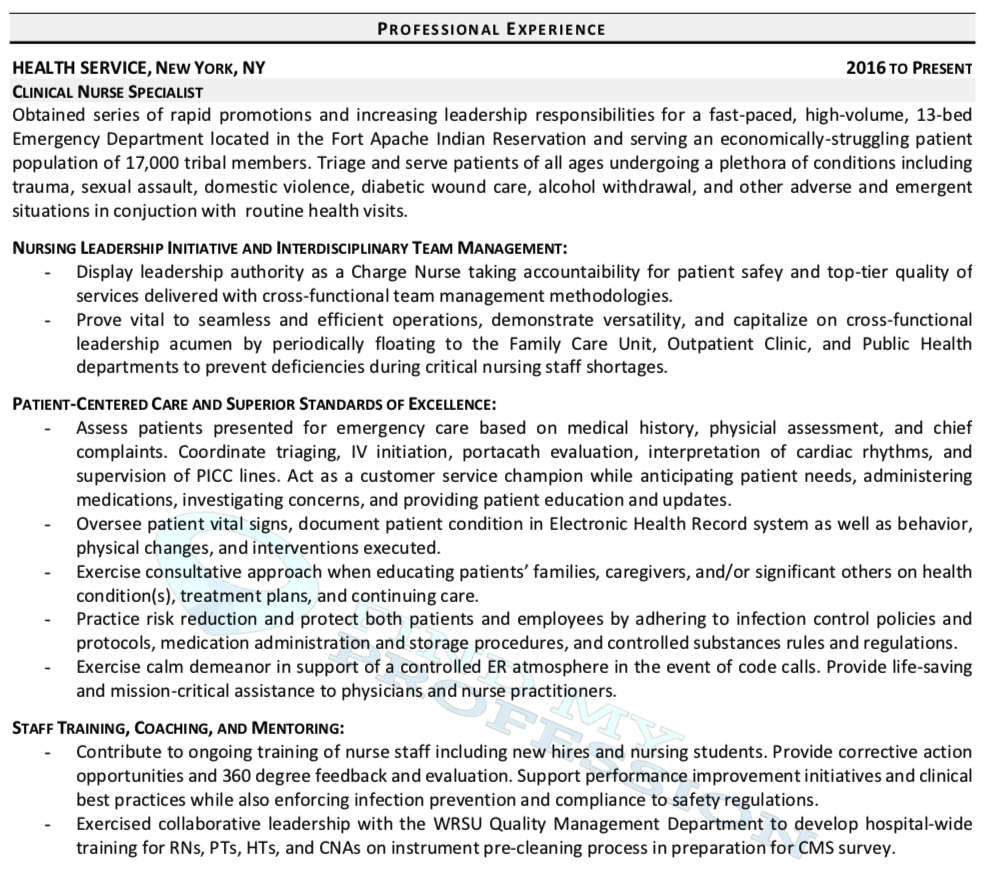
As you can see above, this provides a concise yet detailed look at the responsibilities and accomplishments of this individual.
4. Education
What you put in this section is contingent on the experience that you have.
If you have employment experience (as stated above), you do not need to go further than the name of your degree/diploma.
Be sure also to include the years and the name of the establishment.
If you do not have a degree or a diploma, include the highest qualifications that you have attained.
You are also welcome to create a Qualifications section if this complements your education, employment or application. You can add qualifications to your education section or add the section on its own if you don’t have education information to include. This may include licenses, certifications, and training.
Here is an example of an Education Section that includes all of the above:
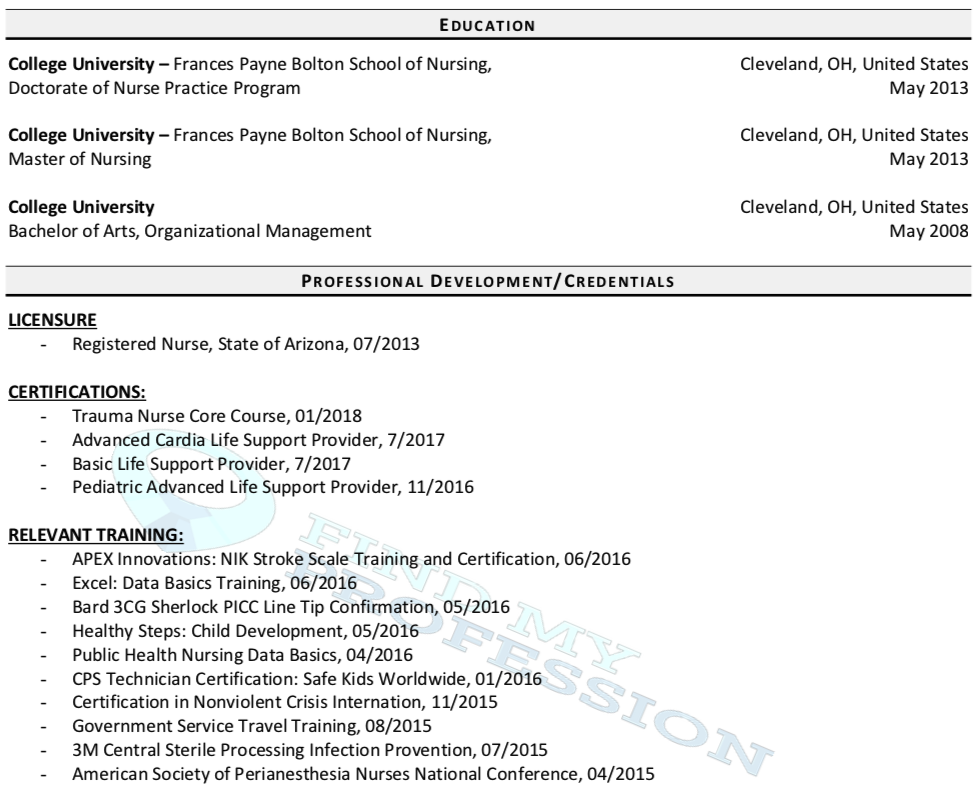
5. Skills
You want to include key skills that you possess that are relevant to the job that you are applying for.
These should be a mixture of hard skills and soft skills.
You can mention the proficiency in each individual skill if you so choose.
Keep the list relatively short.
A wall of text is hardly going to make a recruiter want to spend more than 6 seconds on your CV.
Consequently, shoot for 12-15 skills on your CV.
Skills go after Education on international CVs. However, an Americanized CV tailored towards academics shall have this section going first after your summary.
Your skills section can look like this:

6. Hobbies or Interests
This is an optional section. Some recruiters like to see it because it allows them to see more of the individual behind the application. This is more common outside of the US.
However, just because you like doing it, it does not mean that you must include it here.
If you include this section, put in hobbies that show skills that can transfer into work.
If it is not written on your CV already, include volunteering here.
See a sample image of how that might look here:

7. Additional Sections
From awards to activities to references and more, you may elect to add some further sections like these. Be sure to keep overall length in mind when adding sections.
If you tick all the necessary boxes, you will be doing the minimum.
Please note that it is essential to do this in a positive and eye-catching way to gain extra points.
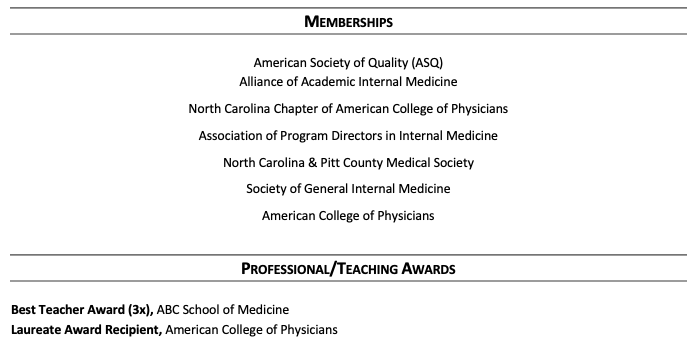
 Top Tip
Top Tip
Get friends or family members to have a look at your CV. Ask for their honest feedback.
Writing Style and Format
You want to be using font size 10-12 for main body text, and 14-16 for headings.
Do not use playful fonts like Comic Sans. That is one way of ensuring that your CV gets put aside immediately.
Also do not use overly flowy or fancy fonts.
Fonts like Arial, Calibri, and Helvetica are safe bets.
Make sure that you have a visually appealing layout, with plenty of white space. That means use bullet points. Have it friendly for skimming.
Remember that a wall of text will turn off readers.
Keep your CV concise and focused. You don’t want it to be longer than 2 pages of letter paper (A4), 3 only if absolutely necessary and warranted.
Keep your formatting consistent. It is a small detail but can distract a reader when something looks different than the rest of the document.
If you print it off, do not fold it or present it folded.
(For more details, see our article, Best Fonts for a Resume or CV.)
Top 11 CV Mistakes to Avoid
So now that we have established what to include on your CV, it is equally important to consider what to avoid.
Blending in with the crowd is a sure way to guarantee that your chances of being chosen remain slim.
Standing out for the wrong reasons is even worse.
Below are examples of what you need to avoid when preparing a CV:
1. Making It Too Long
This can mean that you are including too much. It could mean that you are including irrelevant or out-dated information. One thing that is certain is that a long document won’t be read in its entirety.
2. Using Filler Content
If you need to include useless information or change your font size up in order to take up 2 pages, you are actually better off doing neither. Two pages is not a minimum.
3. Using Cliché or Overused Words
I’m sure you are a “great multi-tasking perfectionist people person who is a fantastic team player who works well under pressure,” but the same is said of another 250 applicants. You will blend in. There are better and less frequently used words.
4. Including Industry Jargon
You may alienate a recruiter if they are not in the same field and are unable to understand it.
5. Including Negative Details
Your CV does not need to document failed exams or other negative career details. Also, do not talk negatively about previous jobs or bosses.
6. Lying
Recruiters can spot lies, and even if they don’t, you can’t back it up with actual proof. That makes for a terrible and completely unnecessary situation to put yourself in.
7. Including an Inappropriate Email Address
If your email address is “CoolGuySmith”, do not use this one on your CV. Create a new and professional email address. It will also make your life much easier to have an inbox dedicated to just job search correspondence.
8. Using Your Professional Summary to Talk About Interests
The name suggests that it is all about you, but it serves you a lot better to highlight what you bring to the table professionally. Make it about the reader and what they want to see.
9. Excessively Covering Work Gaps
Unless a gap is because of school or volunteering, it should be kept to a cover letter. Explaining every wee gap with pretty mediocre reasons is not going to help at all.
10. Including a Picture of Yourself
If it is not requested, odds are it is not wanted. This is a document of your skills, achievements, and history. Not a document of selfies. Your age is similarly irrelevant unless requested.
In some countries (i.e.: Germany, Belgium, France) including a picture is a common practice. Research the customs of the region you will be sending your CV to.
11. Mentioning Pay
No need to mention your current or desired salary. That is for later in the recruitment process. This is not a detail for now at all.
 Top Tip
Top Tip
When proofreading your CV, you are trying to correct more than just spelling, grammar, and formatting. Make sure you haven’t included the above mistakes.
In all cases, you have to be sure not to alienate the recruiter, jump the gun or include unprofessional or irrelevant details.
Always aim to make the document comprehensive, easy and clear.
CV Examples
The format for a curriculum vitae changes based on what jobs are being targeted.
There are international CVs that are formatted very similarly to a US resume.
There are CVs used within the US that are for specific types of roles (research, academic, etc).
There are also international CVs that are formatted differently than the standard US 2-page resume.
Below, see advice for CV writing in a few different contexts.
How to Write a CV for Academia and Research
When attempting to create an academic CV, emphasis on work experience won’t get you far.
As with any process, tailor your application to who will be reading it.
Below, see a few tips about writing a CV for academia:
- It will likely need to be a little longer. That doesn’t mean to give your recruiter death by text. But be ready to write a longer CV.
- Emphasize academia. A little obvious, given what the CV is being written for. Talk about qualifications, awards, funding, research, publications and more. Anything that helps sell you as an academic.
- Separate teaching or tutoring from other employment. Put it higher up, it has more relevance to your CV.
Advice regarding the length of the CV is not applicable here. Accommodating all your academic history is often not reducible to 2 letter pages.
However, you still want to steer clear of other details that you have been advised against.
Here is an example of an academic/research CV. You may download the entire 4-page CV by clicking on the image.
How to Write a CV for International Jobs
So as a US citizen, a CV will often be needed for international applications.
Different countries’ expectations will vary.
Below is a short guide to consider when preparing an international CV.
- Do some research. From tone to length to order, it may differ from country to country. Although the general advice is around 2 pages, maybe expectations differ elsewhere. Be ready to accommodate these preferences to the best of your ability.
- Display cultural knowledge. You aren’t looking to show off, but not appearing to be clueless about where you are applying to is helpful.
- If you are applying for a bilingual position, translate your CV. You may win some bonus points if your recruiter reads a CV in their first language.
- Talk up your credentials. As with anywhere, you are attempting to show that you are the one for the job. Humility has its place elsewhere, but say it as it is here.
If you accommodate the preferences of where you are applying to, you will have made a great start.
Then, following the other advice that you have received in this article, you will have all the tools you need to write a great CV.
Below is an example of an international CV. You may download the entire 3-page document by clicking on the image.
How to Write a CV With No Work Experience
Perhaps you have just graduated or had a period of ill health after school.
Writing your very first CV can be difficult and daunting.
However, the world is not out there to hold you down.
Follow the tips here and you shall prepare a CV that fits you:
- Show what you have to offer. In your professional summary, you don’t need experience in work to have applicable skills. State objectives if relevant.
- Focus on education over your work experience. List your university/college qualifications back to your highest attainment in school in reverse chronological order. List applicable skills here that you can apply from school to the workplace. It is more in-depth because this is where you have accrued most of your transferable skills.
- Include interests or hobbies that are applicable to work. Do not say that you like to go to the movies with friends, for example.
- Cover work history (if you have any). Volunteer work, internships or assistant positions can be listed on your CV. List key accomplishments as shown earlier in the article.
See an example of a 1-page CV with no work experience below:
It is clear that CVs are adaptable to different contexts.
From attempting to apply for management, to academics, to this, tweaks can be made to accommodate your situation. CVs may even be very different between two similar jobs.
But you have been shown what is acceptable, as well as what isn’t.
There are relevant and helpful templates and guides available for every context.
 Top Tip
Top Tip
Always research your potential employer and job description. This allows you to better tailor your CV to the role you are applying to.
Additional Tips for Writing a CV
In all cases, keep it short and make it look appealing.
Now that we have established how different CVs should be written, it is important to keep in mind the advice that applies across the board.
Regardless as to what you are applying for, keep the advice below in mind:
Who Reads a CV?
Tailor your CV to getting read by real people, because eventually, it will be. Do your best to present yourself in a way that others won’t. Make your CV memorable to whoever is reading it for the right reasons and you have made a very good start.
Have a CV That Fits Each Individual Application
This isn’t a general document to throw at any and every potential employer. You do not have to delete everything and start again every time. However, appearing to just be submitting the same document to countless recruiters will not help you.
Don’t Stress Too Heavily If You Find a Small Mistake
Following the advice of this article, a simple typo won’t make you stand out less. Remember the 6 seconds. If you make yourself worth reading more into, a small mistake will not be a dealbreaker. Glaring errors are different.
Use Powerful Words
To make you seem like the right fit, wording can have a big influence.
Instead of “made”, you can say “created” or “produced”. Instead of “finished”, say “completed”.
(For more inspiration, here are 20 Action Verbs for Your Resume/CV)
Remember What You Said
Details on your CV can come up in your interview. It would be awfully embarrassing if something from your CV came up again in the interview process and you couldn’t comment accurately. It looks like you said something that sounds good when you can’t back it up.
There Are Templates Online
Take full advantage of this resource to use a proven template, but still follow all the advice above. Resources like these are there for you to use. You will be able to find a template that fits you.
(Use this article to find some great online resume builders.)
How Should I Save My CV as a File?
Keep the name simple. How simple? Enough to show what the file is, but not be too long. Recruiters look through tons of resumes for various roles every day, make yours easy to find.
JohnSmithMarketingDirectorCV.doc or John-Smith-Marketing-Director-CV.pdf works great. Include your name in the file name. Do not just call it “CV”. If your name and the title of the role you are targetting are lengthy, consider removing the job title from the file name.
Remember that people use different operating systems, so saving your file as a PDF gets around that. If .doc is requested though, go with that.
 Top Tip
Top Tip
Your potential employer may have stipulated what they want to see in CVs. From file name to statement and beyond. Be sure to follow their instructions.
Follow the advice that we have given, and you’ll be well on your way to having a great CV.
Key Takeaways
Writing a CV may prove to be one of the most important things that you will do professionally.
To briefly sum up what we have covered:
- Always keep your CV short unless specifically instructed not to.
- Show yourself honestly in the best light you can – convince the recruiter that you’re the one for the job.
- Concentrate on standing out. From wording to skills to experience – put everything into unique, powerful words.
- Avoid common mistakes like having the document be too long, using cliché words and lying.
There are many resources online that help to write your own CV.
This article has equipped you with the knowledge regarding your CV’s content.
Combine the two, and you will have a perfect CV that stands out from the crowd.
Or, if you’d rather not do it yourself, there is help for that as well.
Find My Profession is a very highly rated resume/CV writing service. You can find plenty more guidance on our website to help you land that perfect job.


